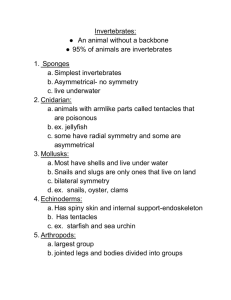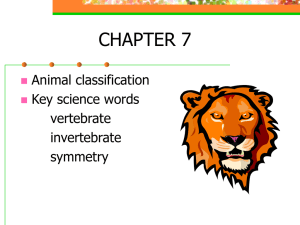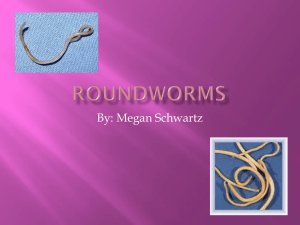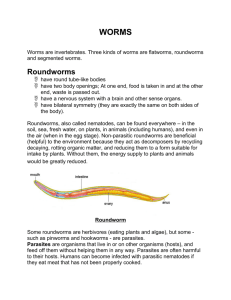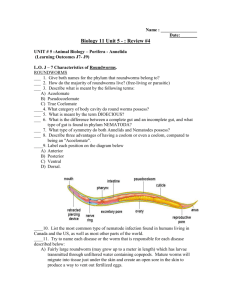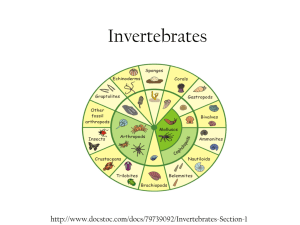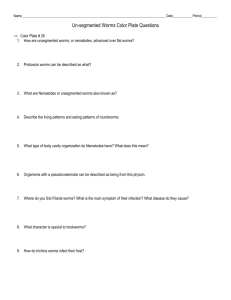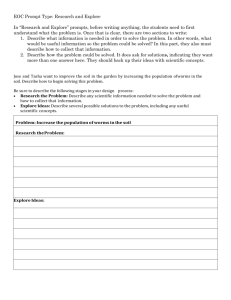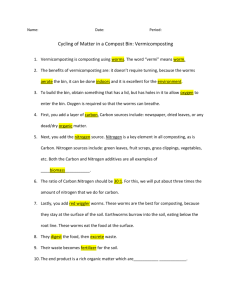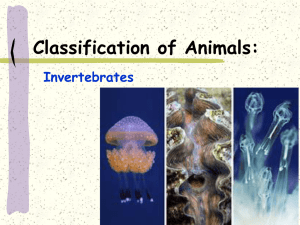Chapter 7 – Simple Animals
advertisement
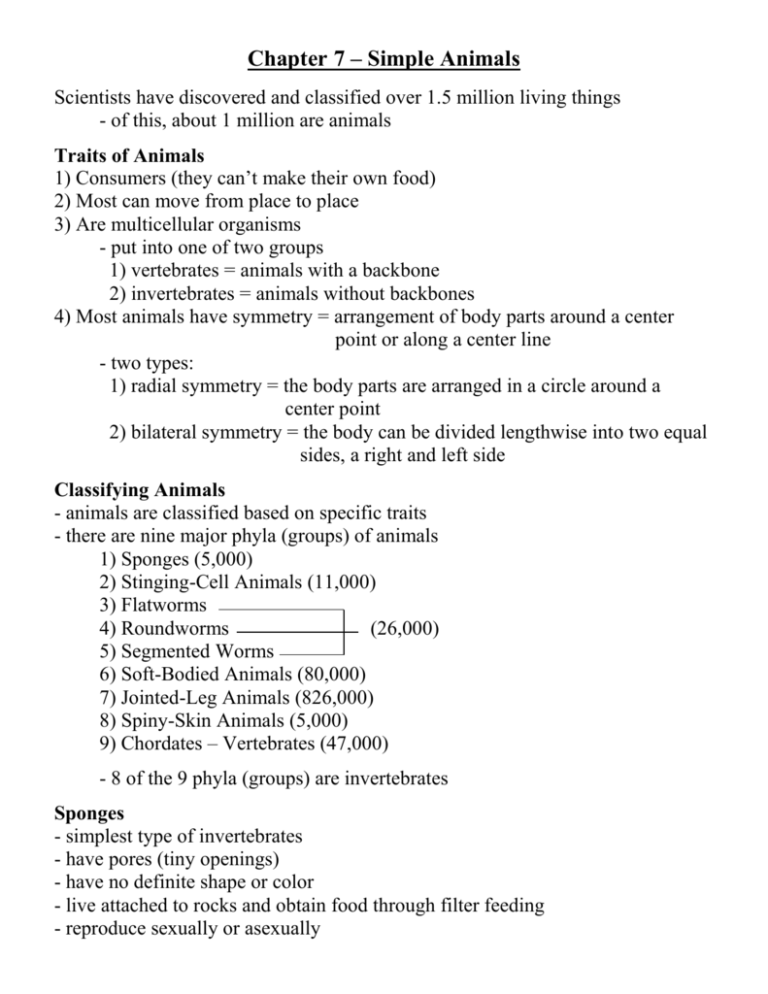
Chapter 7 – Simple Animals Scientists have discovered and classified over 1.5 million living things - of this, about 1 million are animals Traits of Animals 1) Consumers (they can’t make their own food) 2) Most can move from place to place 3) Are multicellular organisms - put into one of two groups 1) vertebrates = animals with a backbone 2) invertebrates = animals without backbones 4) Most animals have symmetry = arrangement of body parts around a center point or along a center line - two types: 1) radial symmetry = the body parts are arranged in a circle around a center point 2) bilateral symmetry = the body can be divided lengthwise into two equal sides, a right and left side Classifying Animals - animals are classified based on specific traits - there are nine major phyla (groups) of animals 1) Sponges (5,000) 2) Stinging-Cell Animals (11,000) 3) Flatworms 4) Roundworms (26,000) 5) Segmented Worms 6) Soft-Bodied Animals (80,000) 7) Jointed-Leg Animals (826,000) 8) Spiny-Skin Animals (5,000) 9) Chordates – Vertebrates (47,000) - 8 of the 9 phyla (groups) are invertebrates Sponges - simplest type of invertebrates - have pores (tiny openings) - have no definite shape or color - live attached to rocks and obtain food through filter feeding - reproduce sexually or asexually Stinging-Cell Animals = animals with stinging cells and hollow, saclike bodies that lack organs - examples: hydras, corals, sea fans, jellyfish, sea anemones - have only one opening called the mouth - many attach themselves to structures like rocks with a part called a disc - acts like a suction cup - feed by ways of tentacles with poison darts on the end - tentacles catch food and pull it into the mouth - have radial symmetry - have muscles and nerve cells that allow them to move from place to place Flatworms - the simplest type of worms - most are parasites - absorb food that the host has already digested - example: tapeworm - lives in the intestine of almost any kind of vertebrate - form cysts in the muscles = a young worm in a protective coating - not common in the United States due to sewage treatment and meat inspection - should cook meat thoroughly to kill tapeworms in meat - example: planarian - not a parasite - less than one cm long - mouth is near the middle of the underside of its body - has eyespots with nerve cells that detect light Planarian (Internal & External Anatomy) Roundworms = worms that have long bodies with pointed ends - many are parasites - live in great numbers in the soil - example: hookworm - enter the body through the skin of the feet - from there they move to the intestine - can rupture the intestinal wall and block ducts in the body Male and Female Roundworms in Intestine Segmented Worms = worms with bodies divided into sections called segments - example: leech - is a parasite - used in medicine to drain excess blood - example: earthworm - body has layers of muscles to help it move - small bristles called setae that help it move through the soil - these make it hard to pull a worm from the ground backwards - take in soil through its mouth - the soil itself is not food but the things inside it are (dead leaves, insects, seeds) - enrich the soil and loosen it, helping plants grow Internal & External Anatomy of an Earthworm Soft-Bodied Animals = animals with a soft body that is protected by a hard shell - the body is protected by a thin, fleshy tissue called the mantle - the mantle makes the shell - have a muscular foot for moving from place to place - each type has a different looking foot with a different job - 3 Classes of Soft-Bodied Animals 1) Snail and Slugs - two pairs of tentacles on the head have sense organs 2) Clams, oysters, and scallops - have two shells - foot is like a shovel that is used to burrow into the ground 3) Octopus and Squid - well-developed eyes - rapid swimmers by shooting a jet of water Snail (External Anatomy) Clam (Internal Anatomy)
